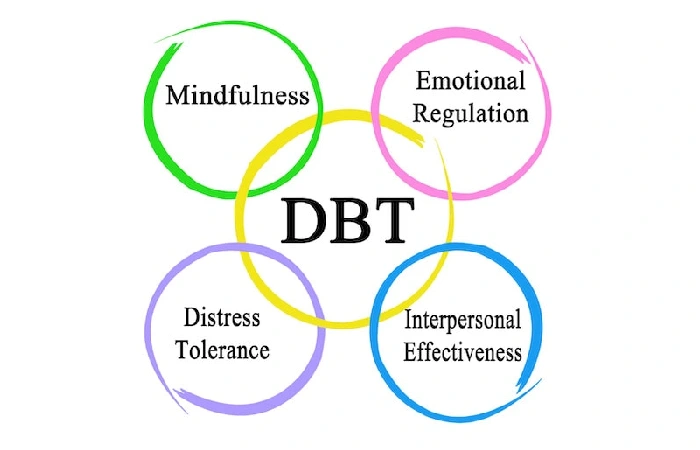The Role of Dialectical Behavior Therapy in Effective Mental Health Treatment – Mental health treatment has evolved significantly over the years, with various therapeutic approaches being developed to address a wide range of mental health issues effectively. One such approach that has gained prominence is Dialectical Behavior Therapy (DBT). DBT, particularly in settings like Florida and the Centers For Behavioral Health in Orlando, has proven to be an effective treatment for a variety of mental health disorders. Explore the role of Dialectical Behavior Therapy in mental health treatment, underscoring its importance and effectiveness in addressing complex psychological conditions.
Table of Contents
Understanding Dialectical Behavior Therapy
Dialectical Behavior Therapy, developed in the late 1980s by psychologist Marsha M. Linehan, is a type of cognitive-behavioral therapy that emphasizes the psychosocial aspects of treatment. DBT is designed to help people change patterns of behavior that are not helpful, such as self-harm, suicidal ideation, and substance abuse. It combines standard cognitive-behavioral techniques for emotion regulation and reality-testing with concepts of distress tolerance, acceptance, and mindful awareness largely derived from Buddhist meditative practice.
Key Components of DBT
-
Mindfulness

Mindfulness, the cornerstone of DBT, teaches patients the art of living in the moment and being acutely aware of themselves and their environment. This component is about experiencing the present moment without judgment and with acceptance. It is fundamental in helping individuals become more attuned to their emotional states and thought patterns. Practicing mindfulness allows individuals to recognize their feelings and thoughts without becoming overwhelmed. This heightened awareness is crucial for individuals struggling with impulsive reactions or intense emotional experiences, as it creates a space between feeling and action, enabling more deliberate and controlled responses.
-
Distress Tolerance
Distress tolerance focuses on equipping individuals with skills to tolerate and survive crises without resorting to self-destructive behaviors. This component of DBT acknowledges that while some painful situations are unavoidable, there are healthier ways to endure and manage this distress. Techniques such as distraction, self-soothing, and improving the moment are taught, enabling individuals to navigate difficult times more effectively. The goal of distress tolerance is not about changing the distressing event but rather changing one’s reaction to it. This skill is particularly beneficial for individuals who experience overwhelming emotions and find it challenging to cope with immediate stressors.
-
Emotion Regulation
Emotion regulation in DBT involves understanding and managing one’s emotions effectively. This component teaches individuals how to identify and label emotions, identify obstacles to changing emotions, reduce vulnerability to the mind, and increase positive emotional events. Through emotion regulation, individuals learn to decrease the frequency of unwanted emotions and lessen their intensity. Techniques such as opposite action (doing the opposite of what one’s emotions urge them to do) and problem-solving are integral parts of this component. This aspect of DBT is crucial for those who experience intense emotional swings and have difficulty stabilizing their emotional state.
-
Interpersonal Effectiveness
Interpersonal effectiveness in DBT is about enhancing communication skills and improving relationships. This component teaches individuals how to ask for what they need, say no, and cope with interpersonal conflict assertively yet respectfully. Skills taught include effectively getting one’s needs met while maintaining self-respect and relationships with others. This component is particularly helpful for individuals who struggle with maintaining healthy relationships, often finding themselves in conflict with others or feeling dissatisfied with their interpersonal interactions.
-
Walking the Middle Path
Another crucial component of DBT is ‘Walking the Middle Path.’ This skill involves balancing acceptance and change, understanding that while some aspects of life can be changed, others must be accepted. It teaches flexibility and the ability to see multiple sides of a situation, reducing black-and-white thinking that often leads to conflict and distress. This component is beneficial in fostering a more balanced and less extreme approach to dealing with personal and interpersonal issues.
The Role of DBT in Mental Health Treatment

DBT has been found to be particularly effective in treating borderline personality disorder, depression, bipolar disorder, post-traumatic stress disorder, and other mental health conditions. Its comprehensive approach addresses the wide range of symptoms and behaviours associated with these disorders, providing patients with the skills needed to manage their condition more effectively.
Tailoring DBT to Individual Needs: Personalization in Therapy
One of the strengths of Dialectical Behavior Therapy (DBT) lies in its adaptability to each individual’s unique needs and circumstances. Personalization is a crucial aspect of DBT, ensuring that therapy is effective and resonates with the person receiving it.
-
Assessment and Understanding Individual Needs
The process of personalizing DBT begins with a thorough assessment. Therapists take time to understand each client’s specific challenges, life situations, and goals. This comprehensive understanding allows them to tailor DBT strategies to address individual issues effectively. For instance, while one person might need more focus on emotion regulation, another might benefit from enhancing interpersonal effectiveness skills.
-
Adapting DBT for Various Mental Health Issues
DBT’s flexibility allows it to be adapted for a wide range of mental health issues, from borderline personality disorder to depression and anxiety. Therapists modify the emphasis of therapy components based on each client’s dominant symptoms and triggers. This customization ensures that the therapy addresses the most pressing issues the individual faces, enhancing the therapy’s relevance and effectiveness.
-
Modifying Techniques for Different Age Groups
DBT can be effectively adapted for various age groups, including adolescents and older adults. Therapists adjust the language, examples, and exercises to suit their clients’ developmental stage and cognitive abilities. For younger clients, therapists might use more interactive and engaging techniques to teach DBT skills.
-
Cultural Sensitivity and Inclusivity
It is essential for DBT to be culturally sensitive and inclusive. Therapists consider cultural backgrounds and values while devising therapy plans. This sensitivity ensures that therapy is respectful and relevant to the client’s cultural context, making it more effective and accepted.
Conclusion
Dialectical Behavior Therapy plays a critical role in effective mental health treatment. Its comprehensive approach, focusing on mindfulness, distress tolerance, emotion regulation, and interpersonal effectiveness, equips individuals with the skills to manage complex emotional and behavioral issues. For those seeking DBT in Florida, check out an expert services provider. They provide specialized DBT sessions, catering to each patient’s unique needs. To explore how DBT can benefit you or your loved ones, visit their website and step towards a healthier, more balanced life.
